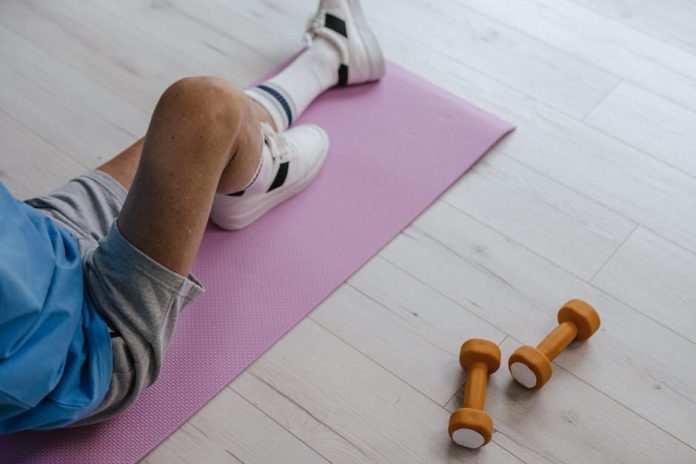As the sun rises each day, casting its warm glow on a world filled with opportunities and adventures, it’s easy to overlook the silent workhorses that make every step, stretch, and sway possible—our joints. For older adults, these pivotal connectors bear the stories of a lifetime, from joyous dances to leisurely strolls. Yet, like any well-worn treasure, they require a little extra care and attention to continue serving us well. In this article, we embark on a journey to explore thoughtful and practical tips for nurturing joint health in our golden years. With empathy and understanding, we’ll uncover ways to keep these crucial companions agile and resilient, ensuring that the symphony of movement continues to play harmoniously throughout life’s rich tapestry. Whether you’re seeking to maintain your current rhythm or regain a spring in your step, this guide is here to support and inspire you on your path to vibrant joint health.
Nurturing Your Joints with Age: Embrace the Art of Movement
As we gracefully journey through the years, our bodies tell stories of experiences lived and adventures embraced. Caring for our joints becomes essential, allowing us to continue weaving new tales with ease and comfort. The key lies in embracing movement, not as a chore, but as an art form that evolves with age. Gentle, regular activities can nurture your joints and maintain their vitality.
- Yoga and Tai Chi: These ancient practices offer a blend of stretching, balance, and mindfulness, promoting flexibility and joint strength.
- Swimming: The buoyancy of water supports your joints while providing a full-body workout, making it an excellent choice for gentle yet effective exercise.
- Walking: A simple stroll in the park can work wonders for joint health, especially when done regularly.
- Strength Training: Building muscle around your joints helps to protect them. Use light weights or resistance bands to enhance your routine.
Embrace these movements with the mindset of an artist, each step and stretch a brushstroke in the masterpiece of your well-being. Listen to your body, and allow it to guide you toward activities that feel both nurturing and invigorating.

The Role of Nutrition in Joint Longevity: Foods that Heal and Protect
As we age, maintaining joint health becomes crucial, and nutrition plays a pivotal role in this journey. Incorporating foods that are rich in anti-inflammatory properties and essential nutrients can significantly contribute to joint longevity. Omega-3 fatty acids, found abundantly in fatty fish like salmon and mackerel, help reduce joint pain and stiffness. Similarly, leafy greens such as spinach and kale are packed with antioxidants and vitamins that support joint function and reduce inflammation.
Consider adding the following foods to your diet for optimal joint health:
- Berries: Loaded with antioxidants, they help fight inflammation.
- Nuts and seeds: Rich in healthy fats and protein, they provide essential nutrients for joint maintenance.
- Olive oil: Contains oleocanthal, which has anti-inflammatory effects similar to ibuprofen.
- Turmeric: Its active compound, curcumin, is known for its powerful anti-inflammatory properties.
By making these dietary adjustments, older adults can not only support their joint health but also enhance their overall well-being. Remember, every meal is an opportunity to nourish and protect your joints for the years to come.

Gentle Exercises for Ageless Joints: Finding Joy in Movement
As we gracefully age, embracing gentle exercises can bring newfound joy to our daily routines while nurturing our joints. These activities not only enhance flexibility but also promote overall well-being, ensuring that movement remains a source of happiness. Consider incorporating the following activities into your routine:
- Walking: A simple, yet powerful way to keep your joints in motion. Enjoy a stroll in the park or around your neighborhood, savoring the sights and sounds of nature.
- Water Aerobics: The buoyancy of water reduces stress on joints, allowing for a full range of motion. This low-impact exercise is both refreshing and effective.
- Yoga: With its emphasis on stretching and balance, yoga can be adapted to suit all levels. It offers a gentle way to increase flexibility and strengthen muscles around the joints.
- Chair Exercises: Perfect for those with limited mobility, chair exercises can be performed while seated, focusing on gentle stretching and muscle engagement.
Incorporating these exercises into your daily routine can transform the way you perceive movement, turning it into a joyful and liberating experience. Remember, it’s not about pushing limits but about finding delight in every step, stretch, and splash.
Mindful Living for Joint Health: Stress Management and Self-Care Practices
Incorporating mindfulness into daily routines can have a profound impact on joint health, especially for older adults. Stress can exacerbate inflammation and pain, so managing it effectively is crucial. Consider engaging in mindful meditation or deep-breathing exercises to help reduce stress levels. These practices encourage a focus on the present moment, which can diminish feelings of anxiety and tension.
Embracing self-care practices can also bolster joint health. Here are some gentle yet effective self-care tips:
- Yoga or Tai Chi: These low-impact exercises not only improve flexibility and strength but also promote mental clarity and relaxation.
- Warm Baths: Soaking in a warm bath can soothe sore joints and muscles, providing relief and relaxation.
- Regular Sleep Routine: Ensuring adequate rest supports overall health and can significantly reduce joint discomfort.
- Balanced Diet: Consuming a diet rich in anti-inflammatory foods like fish, nuts, and leafy greens can support joint health.


